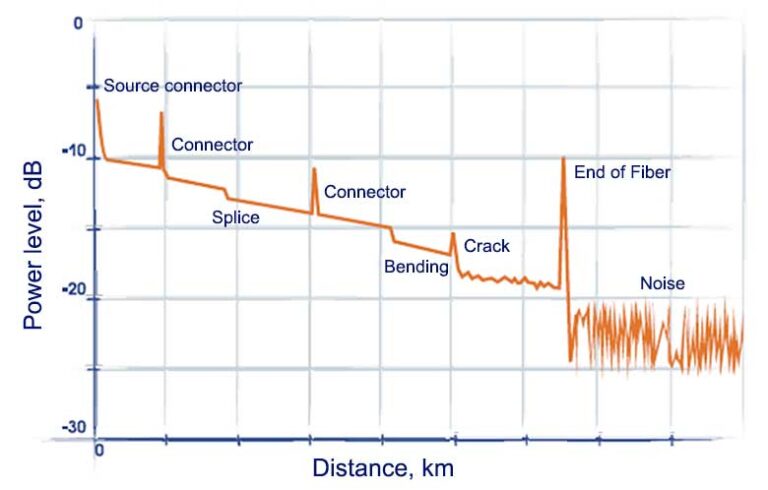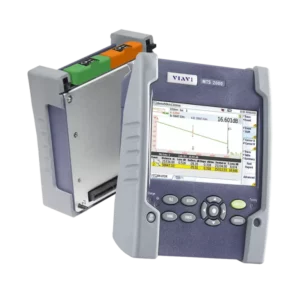
After connecting the Fiber Optic Cable, OTDR sends a laser pulse into the cable.
The laser pulse travels through the cable and scatters the backward.
The device measures backscattered laser pulses characteristics.
For example, it measures the amplitude. The amplitude tends to decline all the time.
How far in the cable you measure the amplitude, the weaker the amplitude of the scattered light.
This phenomenon is caused by several reasons.
While light is going through the fiber optic cable it gets a power loss.
OTDR measures this power loss or amplitude values. It also measures and saves the time difference.
So that we can understand the location and diagnose the problem.
Some of the things that are looking at are listed below.




